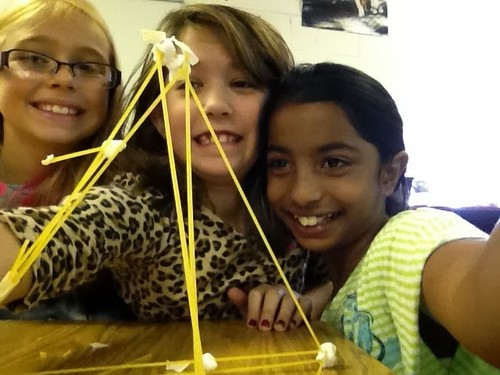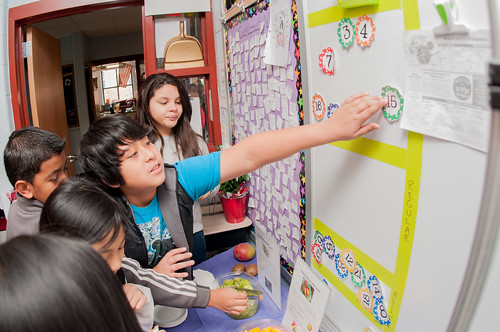
"Creativity is the process of bringing something new into being. Creativity requires passion and commitment. It brings to our awareness what was previously hidden and points to new life. The experience is one of heightened consciousness: ecstasy. " - Rollo May.
People might differentiate creativity and innovation but creativity is a part of innovation. It is the act of turning new and imaginative ideas into reality. Creativity is required in every field of job, be it a multinational company or an advertising company or an educational institute. A classroom itself is a place of creation. It is a place where creativity takes birth. Both teachers and students share ideas and make a classroom a creative hub. Creativity is in our mind. It is central, along with skills like collaboration, critical thinking, and communication and helps in bringing a shift from teacher-directed learning to a more student-oriented learning and bring a change in the approach. We don't want our students' creativity to end with the comments they leave on their friends' Facebook pages.
Every child is borne with the potential of being creative. Creativity is something that needs to be cultivated and classroom is the place one must start cultivating one's creativity. There are various techniques or strategies which guide teachers to promote creativity in classroom. Some techniques are as follows:
• Emotional Connection - Researchers say that creativity can be cultivated through emotional cultivation. For instance if a project related to community problems like domestic violence is given to a student, it can help them to develop the much needed creativity
• Classroom environment - Classroom environment plays a crucial role in cultivating creativity and confidence in students. It is the duty of the teachers to make the classroom more creative by making students participate in each and every activity. Getting involved with the students in the community is the best way to give a push to their creativity. There are three small steps through which a teacher can make their class more effective for their students.
- Permit frequent discussion and interaction amid students in the classroom.
- Make time for informal class opportunity for the students.
- Memorize each student's name meanwhile ensure every student knows each other's name.
• The use of different models - A perfect model can help student in promoting creativity and establishing more contacts, create chances and resolve novel issues.
• Risk taking - Teachers must encourage students to take risks as the ability of taking risk prompts creativity.
• Active Learning - Active learning includes use of creative stuffs like games, concepts, maps and study materials. One can encourage active learning only when the students are interested. Teachers can cultivate creativity by introducing interactive sections that provide an opportunity to students to solve a problem, by asking them to prepare questions for the upcoming exams.

Creativity has always been prized in the American society but has hardly been understood by anyone. Every invention, both practical and whimsical is the product of creativity. "The great engine that drives innovation and invention in society comes from people whose flame of creativity was kept alive in childhood, " says Alice Sterling Honig, PhD, of Syracuse University. The disappearance of creativity in the classroom is worrying teachers. The charm of creativity is fading out and worksheets are taking its place. Teachers should encourage students so that they come out with new ideas and think out of the box.
Teachers can apply different strategies to make the classroom a vibrant and innovative place. Here are some strategies that teachers can apply to add a creative spark in the classroom:
1. Create a classroom that recognizes and encourages creativity. You can design awards or bulletin boards to showcase different ways of solving a problem, or creative solutions to a real world scenario.
2. Always use strategies that are helpful and can become advantageous in the long run.
3. Think of creativity as a skill. Much like resourcefulness and inventiveness it is less a trait and more a proficiency that can be taught.
4. Participate in or create a program to develop creative skills. Programs like Odyssey of the Mind and Think quest bring together students from around the world to design creative solutions and bring them to competition.
In the recent times there has been a shift towards the increased acceptance of valuing creativity. Our traditional education system must take the blame for the absence of creativity in classrooms. Most of the teachers are forced to teach and as a result lack the skills or interest to produce creativity in a classroom. It is the duty of teachers to introduce and nurture creative thought in the classroom. Visual effects can allow students to look at photos or paintings and as a result come up with stories. Music can also encourage students to be creative as they can visualize the scenes that play in their mind while they listen to the music. English teachers really have great opportunities to infuse creativity in the minds of teachers. Creativity should not be limited to the English or arts classes. There should be places for every teacher to add creative elements in their daily curriculum.
Creativity can take us to the moon. So we must make sure that the value of creativity is understood by the students and they are given each and every chance to bring their creative side and add interesting flavours to the daily monotony of classroom teaching. Creativity comes with divergent thinking and divergent thinking must be encouraged that can foster an environment for creative work.

No comments:
Post a Comment